#princess frederica of baden
Text
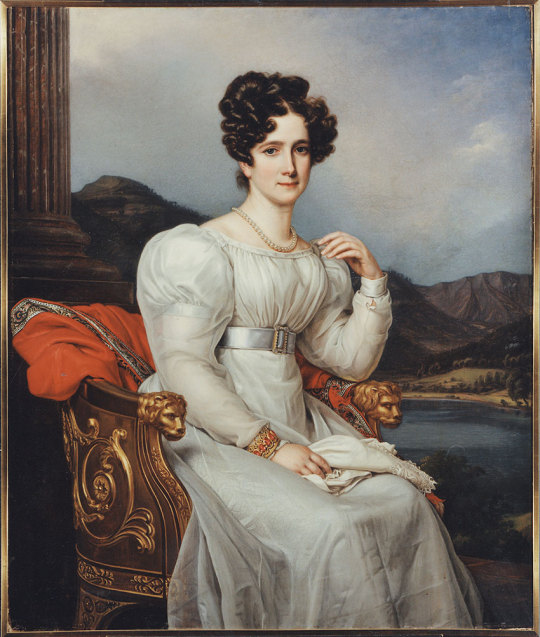
Fredrika of Baden by Joseph Karl Stieler (oil on canvas, 1826)
Fredrika Dorotea Vilhelmina of Baden was born on 12 March 1781 in Karlsruhe. King Gustav IV Adolf married her at Stockholm Palace Chapel on 31 October 1797.
The marriage was initially described as a happy one, but they divorced in 1812 – the first and only time a Swedish king and queen have divorced.
They broke up following the king's loss of Finland after the Finnish War in 1809. King Gustav IV Adolf was then arrested, deposed as king and expelled from Sweden.
Fredrika has given her name to the Norrland towns of Fredrika, Dorotea and Vilhelmina. This part of southern Swedish Lappland is unofficially known as Drottninglandet ('Queenland') in her honour.
Photo: Nationalmuseum
#swedish royal family#queen fredrika#friederike von baden#frederica of baden#prinzessin friederike von baden#princess frederica of baden#friederike dorothea wilhelmine von baden#prinzessin friederike dorothea wilhelmine von baden#house of zähringen#art history#official portrait#swedish royalty#swedish history#royal history#fun fact: most of my ancestors are from those three towns so technically I can brag about my roots being queen-like
7 notes
·
View notes
Text

Emperor Nicholas I (1796 - 1855) and Empress Alexandra Feodorovna (1798 -1860 - nee Princess Friederike Luise Charlotte Wilhelmine of Prussia
Nicholas I, the Iron Tzar, and his sons
This couple was the first “Nicholas and Alexandra” in the Romanov Dynasty. They were Nicholas II's great grant-parents.
It was said that he was the best-looking man in Europe. She was tall and fair and enjoyed jewels, gowns, and balls. They loved each other, and their union was not unhappy, but he did not remain faithful to her (after he died, his last mistress was employed as Alexandra’s lectrice, and they became friends.) Nicholas and Alexandra had seven children, four sons, and three daughters. Those four sons would ensure that the generation of Romanovs following them would not want for male heirs. As a matter of fact, there would be too many Grand Dukes, making it necessary for his grandson, Alexander III, to change the Pauline laws, re-defining who would be considered a Grand Duke or Duchess, among other things (only grandsons/grandaughters of a Tzar would be Grand Duke/Duchesses; great-grandsons and so on would be Princes and Princesses of the blood).

Nicholas I with his four sons: Tsarevich Alexander Nikolayevich (1818 - 1881 - future Alexander II), Grand Duke Konstantin Nikolayevich (1827 - 1882), Grand Duke Nikolay Nikolayevich (1831 - 1891), and Grand Duke Mikhail Nikolayevich (1832- 1909.)
According to the literature, Nicholas raised his two elder sons very strictly but had more of a paternal relationship with the younger two. His priority was to bring them up so that they were true soldiers and so that when Alexander inherited the throne, the other three would help and support him. And they did. Nicholas I adored his daughters and was devastated when his youngest daughter Alexandra (better known as Adini), died. (His daughters would be discussed in another post.)
Below are the sons of Nicholas I and their spouses:
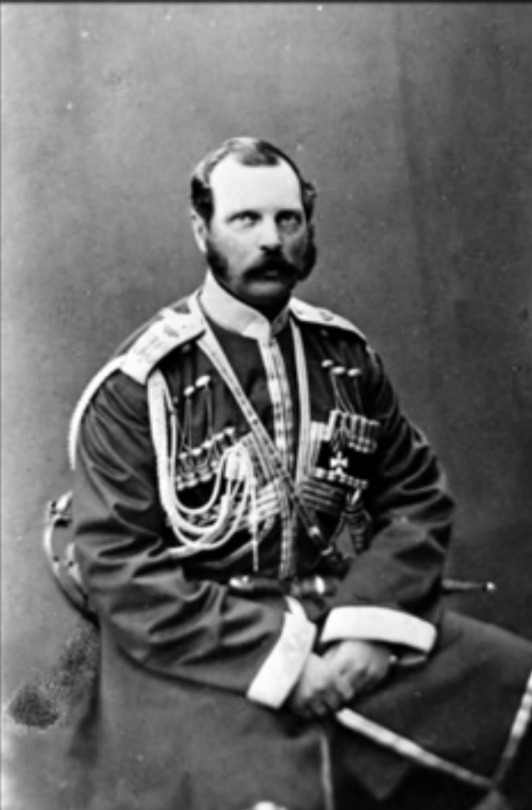


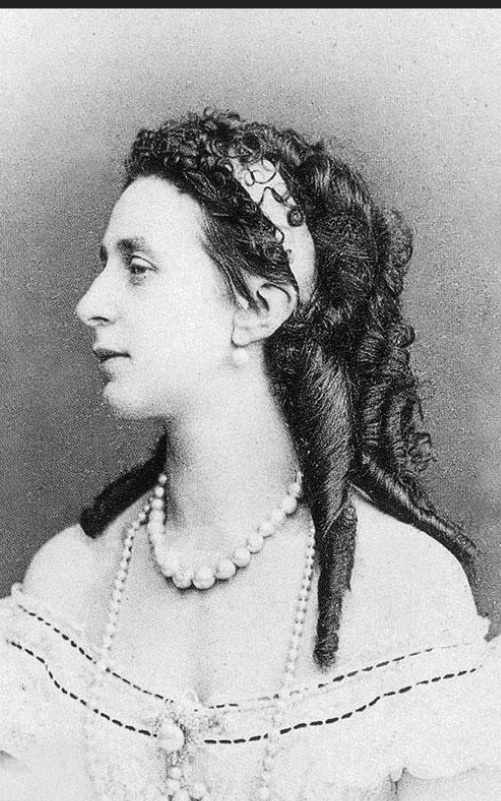

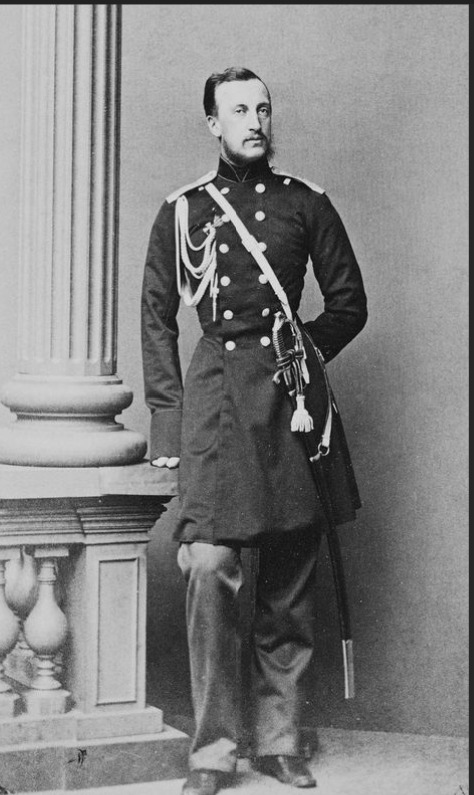

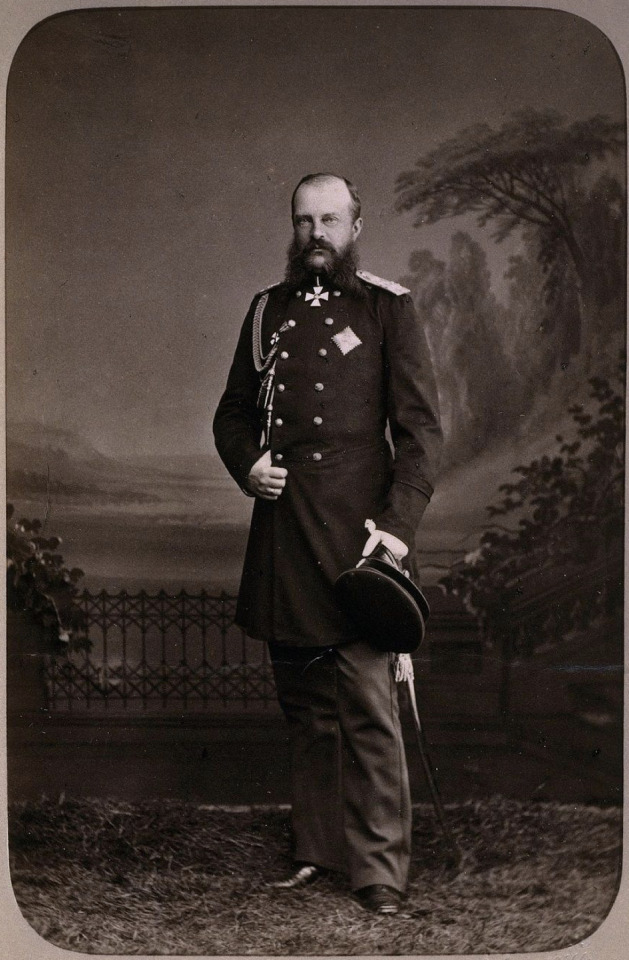
1. Emperor Alexander II and his first wife Empress Maria Alexandrovna (born Princess Wilhemine Marie of Hesse); Issue listed below (Only legitimate issue surviving to adulthood listed; not in birth order)
Grand Duchess Marie
Grand Duke Nicholas Alexandrovich
Alexander III
Grand Duke Vladimir
Grand Duke Alexei
Grand Duke Sergei
Grand Duke Pavel
2. Grand Duke Konstantin Nikolayevich and Grand Duchess Alexandra Iosifovna (Princess Alexandra of Saxe Altenburg); Issue listed below (Only legitimate issue surviving to adulthood listed; not in birth order) - They would be known as the "Konstantinovichi"
Grand Duke Nicholas
Grand Duke Konstantin
Grand Duke Dmitry
Grand Duke Vyacheslav
Grand Duchess Olga
Grand Duchess Vera
3. Grand Duke Nikolay Nikolayevich (the Elder) and Grand Duchess Alexandra Petrovna of Russia, born Duchess Alexandra Frederica Wilhelmina of Oldenburg. Issue listed below (Only legitimate issue surviving to adulthood listed; not in birth order); Known as the "Nikolayvichi”
Grand Duke Nicholas Nikolayevich
Grand Duke Peter Nikolayevich
4. Grand Duke Mikhail Nikolayevich and Grand Duchess Olga Feodorovna (nee Princess Cecilie of Baden) Issue listed below (Only legitimate issue surviving to adulthood listed; not in birth order) They were known as the "Mikhailovichi" (although they preferred to be called the "Michels;" the family called them the "Wild Caucasians" because they grew up in the Caucus and had strong opinions that they voiced loudly)
Grand Duchess Anastasia Mikhailovna
Grand Duke Nicholas Mikhailovich
Grand Duke Mikhail
Grand Duke George
Grand Duke Alexander
Grand Duke Sergei
Grand Duke Alexei
The children and grandchildren of these couples would be directly involved in one way or the other in the Great War, the Russian Revolution, the Civil War in Russia, and the overthrow of the monarchy and the Romanov Dynasty. Some would lose their lives, others would lose children, brothers, and spouses, and all would lose their country, status, and privileges.
#russian history#romanov dynasty#imperial russia#Emperor Nicholas I#Emperor Alexander II#Grand Duke Konstantin Nikolayevich#Grand Duchess Alexandra Iosifovna#Grand Duke Nikolay Nikolayevich#Grand Duchess Alexandra Petrovna of Russia#Grand Duke Mikhail Nikolaevich#Grand Duchess Olga Feodorovna#vintage photography
91 notes
·
View notes
Text


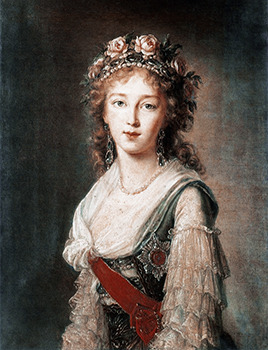

"Catherine would soon have the two sisters, Princesses Louise and Frederica of Baden, brought to court. As Maria Feodorovna, the wife of Paul I, would confide to Catherine, Alexander's heart was beating harder for Louise: "Alexander wrote to us that the delightful Louise pleases him more with each passing day; that there is in her a special beauty and humility that enchants him". Louise, in turn, wrote to her mother: "Grand Duke Alexander is very tall and well-built, he has above all a very well-formed leg and foot, although the foot is very large, but it is proportional to his height. He has light brown hair, blue eyes not too big, but not too small, beautiful teeth, charming skin, a straight nose, very beautiful. From the mouth, he very much resembles the Empress." The future defeatist of Napoleon liked to dress in white from head to toe. It was his habit to moisten his leather trousers to enhance the sculptural effect of his anatomy. As the ladies of the court said, "every part of his body could serve as a model for a sculptor.""
The Tsarinas - The Women who Made Russia | Vladimir Fedorovski.
(loose translation)
#tsar alexander i#facts#elizabeth alexeievna#tsarina elizabeth alexeievna#my own#the romanovs 2013#russian history#romanovs#tsar#tsarina#alexander and alizabeth#louise of baden#russian empire#history
125 notes
·
View notes
Text
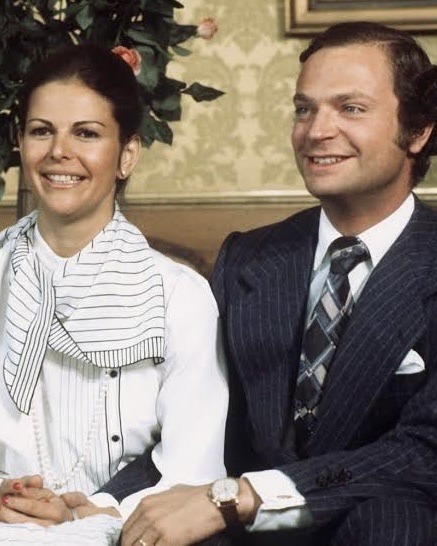

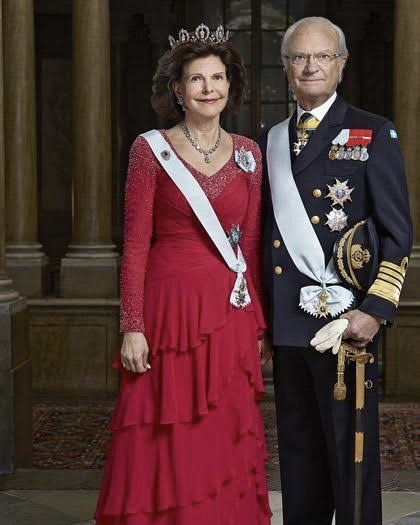

Happy 47th wedding anniversary to King Carl XVI Gustaf and Queen Silvia of Sweden!
The couple tied the knot on June 19 1976 at the Stockholm Cathedral, having met 4 years prior at the 1972 Summer Olympics in Munich; Silvia was assigned to be Carl Gustaf's translator during the games. Carl Gustaf acceded to the throne in the following year following the death of his grandfather.
Their engagement was announced on March 12 1976; the King proposed with a 2-carat ring that belonged to his late mother. Their wedding symbolized the first marriage of a reigning Swedish monarch since King Gustav IV Adolf married Princess Frederica of Baden in 1797; and Silvia became Sweden's first queen consort since 1965.
Their chosen date of June 19 is a symbolic date for the Bernadotte family and one in which multiple family members have gotten married on, including Carl Gustaf and Sofia's eldest daughter, Crown Princess Victoria.
They have three children and eight grandchildren: Crown Princess Victoria, Duchess of Västergötland (45), mother of Princess Estelle (11) and Prince Oscar (7); Prince Carl Philip, Duke of Värmland (44), father of Prince Alexander (7), Prince Gabriel (5) and Prince Julian (2); and Princess Madeleine, Duchess of Hälsingland and Gästrikland, (41), mother of Princess Leonore (9), Prince Nicolas (8) and Princess Adrienne (5).
31 notes
·
View notes
Text
when: royally fun facts
They may not be fun, but some of them are made-up. Made up facts are in italics.
Grand Duchess Anastasia Mikhailovna of Russia
(Karolina Augusta's great-great-grandmother)
Is the granddaughter of Tsar Nicholas I of Russia
Is the mother of Alexandrine, Queen Consort of Denmark
Is the mother of Frederick Francis IV, Grand Duke of Mecklenburg-Schwerin
Is the mother of Cecilie, Crown Princess of Germany
Following the death of her husband, had a illegitimate son with her personal secretary
Three of her brothers were murdered by the Bolsheviks during the Russian revolution
Princess Karola of Urach
(Karolina Augusta's great-grandmother)
Karola’s father, Wilhelm Karl, 2nd Duke of Urach, was briefly elected as the King of Lithuania in 1918.
Princess Karola of Urach was the first queen consort of Mecklenburg, and also the last Grand Duchess of Mecklenburg-Schwerin and of Mecklenburg-Strelitz.
Karola was the grand-niece of Empress Elisabeth ‘Sisi’ of Austria.
Karola was the half-niece of Queen Elisabeth of the Belgians.
Karola half-first cousins include Leopold III of Belgium, and Marie José, the last Queen Consort of Italy.
Karola and Mary of Teck, Queen of the United Kingdom, both descend from morganatic branches of the House of Württemberg. Karola and Mary were third cousins as great-great-granddaughters of Friedrich II Eugene, Duke of Württemberg.
Karola was a Roman Catholic and retained her faith following her marriage to Heinrich Ludwig, though their children were brought up in the Evangelical Lutheran Church of Mecklenburg.
Duchess Thyra of Mecklenburg-Schwerin
(Karolina Augusta's grandmother)
Thyra’s father, Grand Duke Friedrich Franz IV of Mecklenburg-Schwerin, was overthrown by her father-in-law, King Heinrich Ludwig of Mecklenburg
Thyra was the first Crown Princess of Mecklenburg (1939 - 1954)
Thyra was the second Queen of Mecklenburg (1954 - 1980)
Thyra was the niece of Alexandrine, Queen of Denmark (1912 - 1947)
Thyra was the first cousin of Frederik IX of Denmark (1947 - 1972)
Thyra was the niece of Cecilie, Crown Princess of Germany (1905 - 1951)
Thyra was the first cousin of Louis Ferdinand, Prince of Prussia (1951 - 1994)
Thyra was the niece of Marie Louise, Margravine of Baden (1928 - 1929)
Thyra was the first cousin of Berthold, Margrave of Baden (1929 - 1963), who married Princess Theodora of Greece and Denmark (the older sister of Prince Philip, Duke of Edinburgh)
Thyra was the niece of Ernest Augustus, Duke of Brunswick (1913 - 1918) and head of the House of Hannover (1923 - 1953)
Thyra was the first cousin of Ernst August, Hereditary Prince of Brunswick, Prince of Hanover (1953 - 1987)
Thyra was the first cousin of Frederica, Queen of Greece (1947 - 1964)
Princess Eleonora of Leiningen
(Karolina Augusta's mother)
Descends from all three children of Victoria of Saxe-Coburg-Saalfeld: Carl, 3rd Prince of Leiningen; Princess Feodora of Leiningen; and Queen Victoria of the United Kingdom.
Queen Karolina Augusta I of Mecklenburg
Is the first female ruler in Mecklenburg’s 900 year history.
Will be the final ruler from the House of Mecklenburg which will eventually bring an end to the House’s status as the longest still reigning house in European history.
Is descended from both Queen Victoria of the United Kingdom, and of King Christian IX of Denmark.
Has been the youngest monarch in the world since 1992.
Has 15 godparents:
HRH Princess Cecilie Auguste, Duchess of Ludwigslust (paternal aunt)
HRH Princess Marie Anastasia, Duchess of Grevesmühlen (paternal aunt)
HRH Princess Benedikte of Denmark (paternal second cousin once removed)
HRH Princess Alexandra of Hanover, Princess of Leiningen (maternal aunt-by-marriage)
HSH Princess Margarita of Hohenlohe-Oehringen, Princess of Leiningen (maternal aunt-by-marriage)
HM Silvia, Queen of Sweden (family friend)
HM Queen Beatrix of the Netherlands (paternal and maternal second cousin twice removed)
HRH Princess Astrid of Belgium, Archduchess of Austria-Este (paternal third cousin once removed)
HRH Prince Charles, Prince of Wales (paternal third cousin once removed and family friend)
HRH Prince Frederik, Crown Prince of Denmark (paternal third cousin)
HH Prince Harald of Denmark (paternal first cousin once removed)
HSH Prince Hermann Friedrich of Leiningen (maternal first cousin once removed)
HRH Prince Felipe, Prince of Asturias (paternal third cousin)
HH Borwin, Duke of Mecklenburg-Strelitz (distant cousin and family friend)
HSH Hans-Adam II of Liechtenstein (distant cousin and family friend)
0 notes
Text

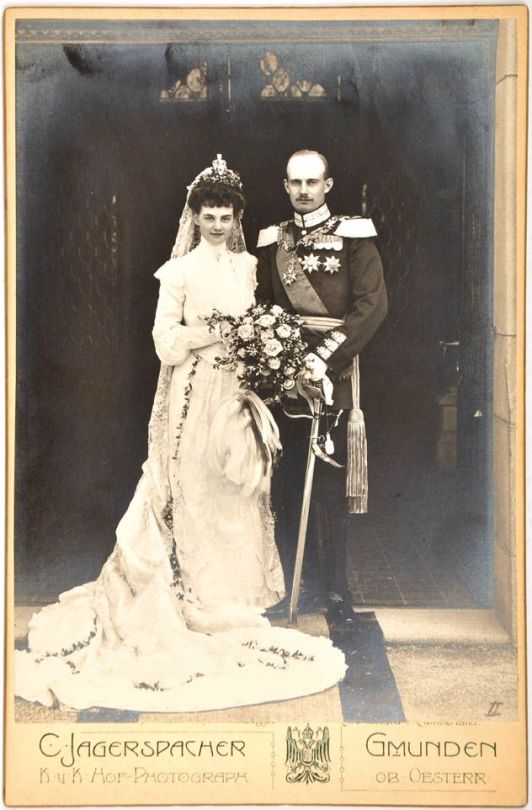
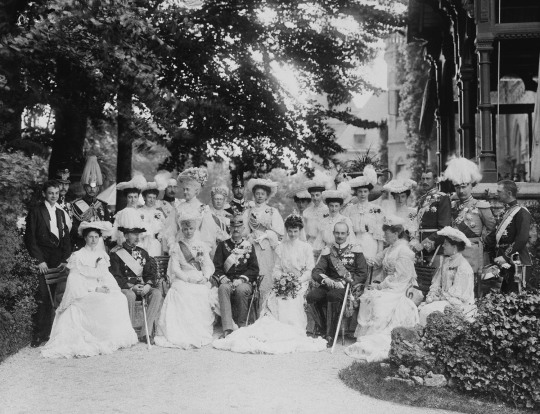
Photograph taken on the day of the wedding of Grand Duke Frederick Francis IV of Mecklenburg-Schwerin and Princess Alexandra of Cumberland, Gmunden, June 7th 1904, with other members of Royal Families of Europe. June 7th, 1904.
Middle row: Prince Ernest Augustus of Hanover, Hereditary Prince George William of Hanover, Prince Frederick of Schaumburg-Lippe, Princess Marie Louise of Baden née Hanover and Cumberland, Princess Charlotte Reuss of Köstritz née Mecklenburg-Schwerin, Prince Maximilian of Baden, Princess Frederica of Hanover (Baroness von Pawel-Rammingen), Duchess Vera of Württemberg née Grand Duchess Vera Konstantinovna, Duke John Albert of Mecklenburg-Schwerin, Duchess Elisabeth Sybille of Mecklenburg-Schwerin née Princess of Saxe-Weimar-Eisenach, unknown Princess, Princess Olga of Hanover and Cumberland, Princess Thyra of Denmark, Duchess Cecilie of Mecklenburg-Schwerin, Crown Princess Alexandrine of Denmark née Mecklenburg-Schwerin, Crown Prince Christian of Denmark.
Front row: Princess Louise of Schaumburg-Lippe née Denmark, King Christian IX of Denmark, Crown Princess Thyra of Hanover née Denmark, Crown Prince Ernest Augustus of Hanover, Grand Duchess Alexandra of Mecklenburg-Schwerin née Princess of Hanover and Cumberland, Grand Duke Friedrich Franz IV of Mecklenburg-Schwerin, Dowager Grand Duchess Anastasia Mikhailovna of Mecklenburg-Schwerin, Grand Duchess Maria Pavlovna The Elder.
Source: pinterest and Royal Collection
#Grand duchess alexandra of Mecklenburg-Schwerin#grand duke frederick francis iv of Mecklenburg-Schwerin#grand duchess anastasia mikhailovna#grand duchess maria pavlovna#king Christian ix of Denmark#crown princess cecilie of prussia#queen alexandrine of denmark#King Christian x of Denmark#crown Prince ernest augustus of hanover#crown princess thyra of hanover#Prince maximilian of baden#princess marie louise of hanover#princess louise of denmark#Prince Frederick of Schaumburg-Lippe#Princess frederica of hanover#duke john albert of mecklenburg-schwerin#mecklenburg-schwerin#princes thyra of Denmark#princess Olga of hanover#princess Alexandra of hanover#Prince ernest augustus of hanover#hanover and cumberland#brunswick#royal weddings
43 notes
·
View notes
Text

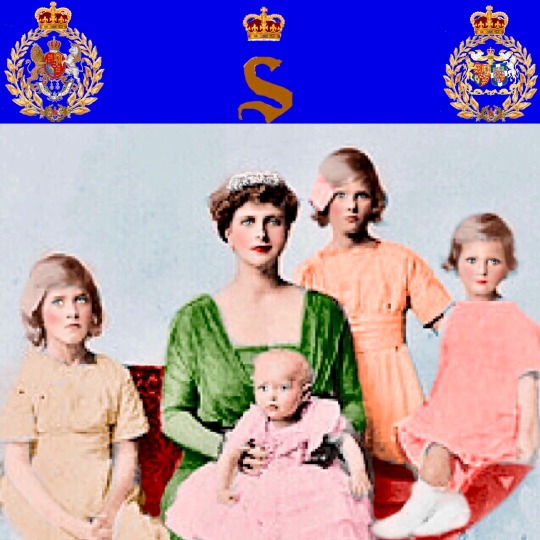
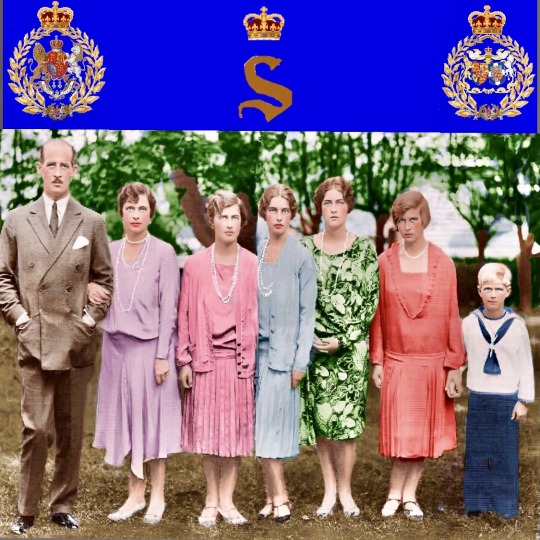



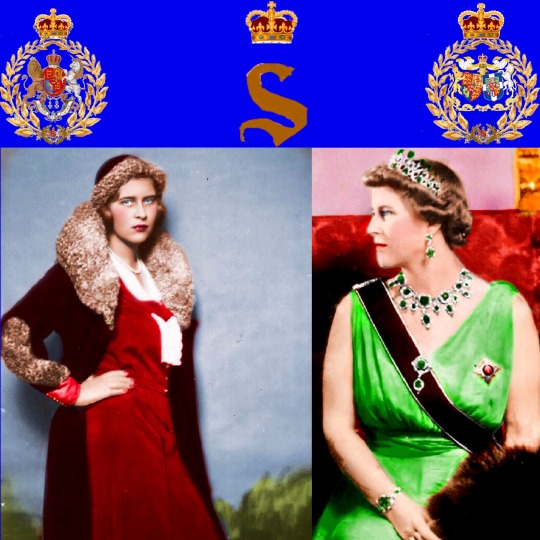
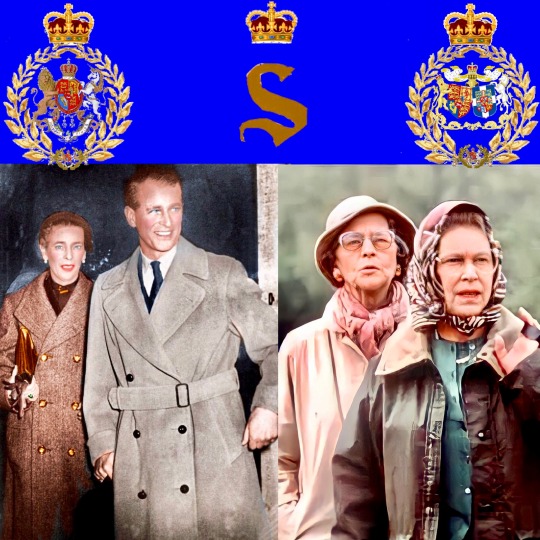
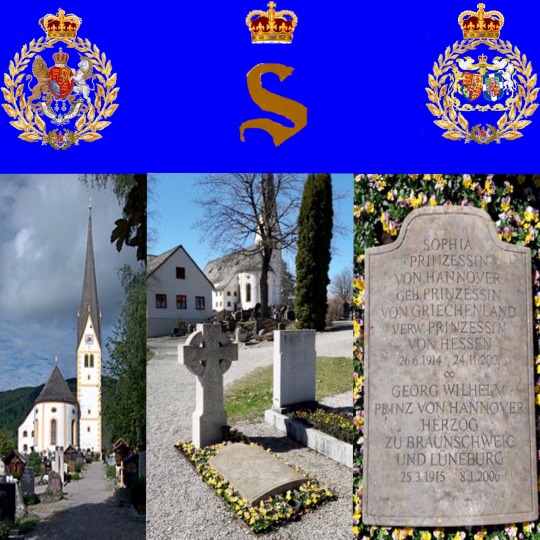
Last Wednesday was 20 years since the death of HRH Princess Sophie of Greece, Denmark , Hesse-Kassel and Hannover in 24–11–2001
Princess Sophie of Greece and Denmark was born on the 26th of June, 1914 in Mon Repos the Greek Royal Estate in Corfu which was left to Her Father Prince Andreas
(one of four sons of King George I of Greece and Grand Duchess Olga Constantinovna of Russia ) in King George’s I will .
(1st Collage)
She was youngest daughter of Prince Andrew of Greece and Princess Alice of Battenberg, she was the sister of Princess Margarita (later Princess of Hohenlohe-Langenburg), Princess Cecile (later Grand Duchess of Hesse), Princess Theodora (later Margravine of Baden), and Prince Phillip (the Duke of Edinburgh).
(2nd,3rd,4th Collage)
Her cousins include King George, King Alexander, and King Paul of Greece, Queen Helen of Romania, Princess Irene, Duchess of Aosta, Princess Marina, Duchess of Kent, Princess Olga of Yugoslavia, Princess Eugenie of Greece, Prince Michael of Greece, Queen Alexandra of Yugoslavia, Queen Sofia of Spain, King Constantine II of Greece, and King Michael of Romania. Spending most of her early life in Greece,
the family was forced to flee during the Greek Royal Family’s frequent exiles in the 1920s, residing in Paris until she married Prince Christoph of Hesse, becoming the first of her sisters to get married, at the young age of 16.
(5th Collage)
The couple had five children, and remained happily married until his death in a plane crash in 1943, while serving the Nazis in WWII.
In 1946, Princess Sophie married Prince George William of Hanover, (Queen Fridericki of Hellenes Brother)
(6th Collage )
discovering the Hesse family jewels had been stolen in the process. The couple had three children and were happily married until her death. As the sister-in-law of Queen Elizabeth II and Queen Frederica of Greece, Princess Sophie attended a plethora of royal events throughout her life, frequently being seen at Greek Royal events and the Royal Windsor Horse Show, and was a godmother of the Earl of Wessex. She was the last of the Duke of Edinburgh’s sisters to pass away, on 24th of November 2001
(7th 8th Collage)
The princess spent the last months of her life in a nursing home in Schliersee, where she died and was survived by her husband, seven children, fourteen grandchildren and fourteen great-grandchildren.
Her funeral was held at Wolfsgarten Castle in the presence of many members of the aristocracy,and her remains were buried at the cemetery of St Martin's Church in Schliersee, where she was eventually joined by her second husband, in 2006.
(9th Collage)
Την προηγούμενη Τετάρτη συμπληρώθηκαν 20 χρόνια από τον θάνατο της ABY Πριγκίπισσας Σοφίας της Ελλάδας, Δανίας, Εσσης - Κάσελ και Αννόβερου στις 24–11–2001
Η πριγκίπισσα Σοφία της Ελλάδας και της Δανίας γεννήθηκε στις 26 Ιουνίου 1914 στο Μον Ρεπό, το Ελληνικό Βασιλικό Κτήμα στην Κέρκυρα, το οποίο αφέθηκε στον πατέρα της Πρίγκιπα Ανδρέα.
(ένας από τους τέσσερις γιους του Βασιλιά Γεωργίου Α' της Ελλάδας και της Μεγάλης Δούκισσας Όλγας Κωνσταντίνοβνα της Ρωσίας) στη διαθήκη του Βασιλιά Γεωργίου Α'.
(1ο Κολάζ )
Η Πριγκίπισσα Σοφία ηταν η μικρότερη κόρη του πρίγκιπα Ανδρέα της Ελλάδας και της πριγκίπισσας Αλίκης του Battenberg, ήταν αδερφή της πριγκίπισσας Μαργαρίτας (αργότερα πριγκίπισσας του Hohenlohe-Langenburg), της πριγκίπισσας Κεκιλιας (αργότερα Μεγάλης Δούκισσας της Έσσης), της Πριγκίπισσας Θεοδώρας (αργότερα Margravine of Baden). και ο πρίγκιπας Φίλιππος (ο δούκας του Εδιμβούργου).
(2ο,3ο,4ο Κολάζ)
Στα ξαδέρφια της περιλαμβάνονται ο Βασιλιάς Γεώργιος, ο Βασιλιάς Αλέξανδρος και ο Βασιλιάς Παύλος της Ελλάδας, η Βασίλισσα Ελένη της Ρουμανίας, η Πριγκίπισσα Ειρήνη, η Δούκισσα της Αόστα, η Πριγκίπισσα Μαρίνα, η Δούκισσα του Κεντ, η Πριγκίπισσα Ολγα της Γιουγκοσλαβίας, η Πριγκίπισσα Ευγενία της Ελλάδας, ο Πρίγκιπας Μιχαήλ της Ελλάδας, η Βασίλισσα Αλεξάνδρα της Γιουγκοσλαβίας, η βασίλισσα Σοφία της Ισπανίας, ο βασιλιάς Κωνσταντίνος Β' της Ελλάδας και ο βασιλιάς Μιχαήλ της Ρουμανίας.
Περνώντας το μεγαλύτερο μέρος της πρώιμης ζωής της στην Ελλάδα, η οικογένεια αναγκάστηκε να φύγει κατά τη διάρκεια των συχνών εξοριών της ελληνικής βασιλικής οικογένειας τη δεκαετία του 1920, ζώντας στο Παρίσι έως ότου παντρεύτηκε τον πρίγκιπα Χριστόφορο της Έσσης- Κασέλ και έγινε η πρώτη από τις αδερφές της που παντρεύτηκε στην νεαρή ηλικία 16 ετών. Το ζευγάρι είχε πέντε παιδιά και παρέμεινε ευτυχισμένο παντρεμένο μέχρι το θάνατό του σε αεροπορικό δυστύχημα το 1943, ενώ υπηρετούσε τους Ναζί στον Β' Παγκόσμιο Πόλεμο.
( 5ο Κολάζ)
Το 1946, η πριγκίπισσα Σοφία παντρεύτηκε τον πρίγκιπα Γεώργιο Γουιλιελμο του Ανόβερου, (αδελφος της Βασιλισσας Φριδερικης των Ελλήνων )
(6ο Κολάζ)
ανακαλύπτοντας ότι τα κοσμήματα της οικογένειας της Έσσης είχαν κλαπεί κατά την διάρκεια της παραμονής των Αμερικανικών δυνάμεων μετά την ήττα του Χιτλερ στο κάστρο της Βασιλικης Οικογένειας της Εσσης
Το ζευγάρι είχε τρία παιδιά και ήταν ευτυχισμένοι μέχρι το θάνατό της. Ως κουνιάδα της Βασίλισσας Ελισάβετ Β' και της Βασίλισσας Φρειδερίκης της Ελλάδος, η Πριγκίπισσα Σοφία παρακολούθησε μια πληθώρα βασιλικών εκδηλώσεων καθ' όλη τη διάρκεια της ζωής της, εμφανιζόμενη συχνά σε εκδηλώσεις της Ελληνικής Βασιλικής και στο Royal Windsor Horse Show, και ήταν νονά του Πρίγκιπα Εδουάρδου κόμη του Γουέσεξ. Ήταν η τελευταία από τις αδερφές του Δούκα του Εδιμβούργου που πέθανε.
(7ο 8ο Κολάζ )
Η πριγκίπισσα πέρασε τους τελευταίους μήνες της ζωής της σε ένα γηροκομείο στο Schliersee, όπου πέθανε και στις 24 Νοεμβρίου 2001 αφήνοντας έτσι πισω τον δεύτερο σύζυγό της, επτά παιδιά, δεκατέσσερα εγγόνια και δεκατέσσερα δισέγγονα.
�� κηδεία της τελέστηκε στο Κάστρο Wolfsgarten παρουσία πολλών μελών της αριστοκρατίας και τα λείψανά της θάφτηκαν στο νεκροταφείο της εκκλησίας του St Martin στο Schliersee, όπου τελικά ενώθηκε με τον δεύτερο σύζυγό της, το 2006.
(9ο Κολάζ)
#kingconstantine#danishroyalfamily#crownprincepavlos#queenannemarie#greek royal family#house of romanov#greekroyals#crownprincessmariechantal#danishroyals#princeconstantinealexios#princess theodora#princessmarieolympia#princeachileasandreas#princenikolaos#princesstatiana#princessalexia#princessnina#princesseirini#princeodyseaskimon#princearistidesstavros#princefilippos
14 notes
·
View notes
Photo

Adolf Fredrik, 1710-1771, King of Sweden and Duke of Holstein-Gottorp. By Antoine Pesne.
His mother, Albertina Frederica of Baden-Durlach (1682–1755), was a descendant of earlier royal dynasties of Sweden, great-granddaughter of Princess Catherine of Sweden, mother of King Charles X of Sweden. On his mother's side, Adolf Frederick descended from King Gustav Vasa and Christina Magdalena, a sister of Charles X of Sweden.
#Antoine Pesne#kingdom of sweden#house of holstein gottorp#konungariket sverige#king adolf fredrik of sweden#kung av sverige
5 notes
·
View notes
Photo
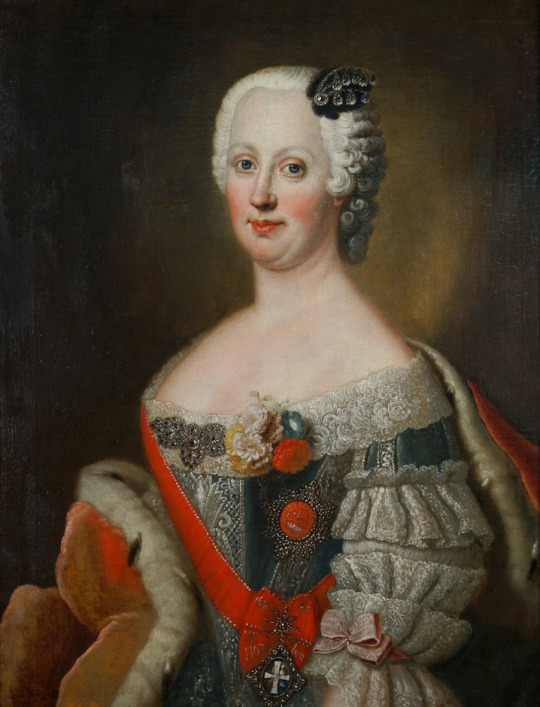
Johanna Elisabeth of Holstein-Gottorp (24 October 1712 – 30 May 1760) was a German regent, Princess of Anhalt-Zerbst by marriage to Christian August, Prince of Anhalt-Zerbst, and regent of Anhalt-Zerbst from 1747 to 1752 for her minor son, Frederick Augustus. She is best known as the mother of Catherine the Great of Russia. She was born at Gottorp, the daughter of Christian August, Duke of Holstein-Gottorp and Albertina Frederica of Baden-Durlach.
#Johanna Elisabeth of Holstein-Gottorp#House Holstein-Gottorp#XVIII century#people#portrait#paintings#art#arte
2 notes
·
View notes
Photo
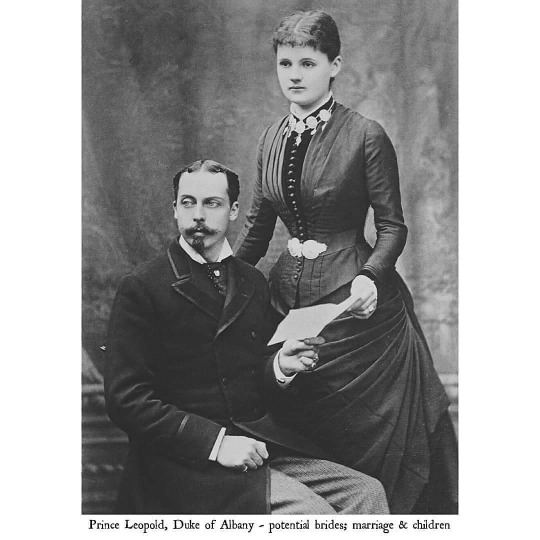
Prince Leopold, Duke of Albany
.
Potential brides, marriage & children;
.
Prince Leopold was created Duke of Albany, Earl of Clarence & Baron Arklow on 24 May 1881.
.
◼ Prince Leopold, stifled by the desire of his mother, Queen Victoria, to keep him at home, saw marriage as his only hope of independence. Due to his haemophilia, he had difficulty finding a wife. Heiress Daisy Maynard was one of the women he considered as a possible bride. He was acquainted with Alice Liddell, the daughter of the Vice-Chancellor of Oxford for whom Lewis Carroll wrote Alice’s Adventures in Wonderland, & was godfather of Alice’s second son, who was named for him. It has been suggested that he considered marrying her, though others suggest that he preferred her sister Edith (for whom he later served as pall-bearer on 30 June 1876).
.
◼ Leopold also considered his second cousin Princess Frederica of Hanover for a bride; they instead became lifelong friends & confidantes. Other aristocratic women he pursued included Victoria of Baden, Princess Stéphanie of Belgium, Princess Elisabeth of Hesse-Kassel, & Princess Karoline Mathilde of Schleswig-Holstein-Sonderburg-Augustenburg. Leopold was very fond of Mary Burton, but, though she was very fond of him too, at 19, she felt she was too young to marry.
.
◼ After rejection from these women, Victoria stepped in to bar what she saw as unsuitable possibilities. Insisting that the children of British monarchs should marry into other reigning Protestant families, Victoria suggested a meeting with Princess Helena Friederike, the daughter of Georg Viktor, reigning Prince of Waldeck-Pyrmont, one of whose daughters had already married King William III of the Netherlands.
.
◼ On 27 April 1882, Leopold & Helena were married, at St George’s Chapel at Windsor Castle, & his income was raised by parliament to £25,000.
.
◼ Leopold & Helena enjoyed a happy (although brief) marriage.
.
◼ On 25 February 1883, Leopold became a father when his wife gave birth to a daughter, Alice.
.
◼ He died on 28 March 1884, shortly before the birth of his son, Charles Edward, born on 19 July 1884.
.
.
.
(at United Kingdom)
https://www.instagram.com/p/B-SSnFmDyHF/?igshid=1ad40gj7g2a2g
2 notes
·
View notes
Text
Master Post of German & Austrian Nobles and Royals
Royal and Noble Houses
House of Coburg (Cadet branch of the House of Wettin)
Princess Alice of Great Britain and Ireland, The Grand Duchess of Hesse and by Rhine
Princess Charlotte of Belgium, The Empress of Mexico
Princess Louise of Saxe-Gotha-Altenburg, The Duchess of Saxe-Coburg-Saalfeld, (1st marriage)
Princess Mary of Teck, The Queen of the United Kingdom & British Dominions, The Empress of India
Princess Stéphanie of Belgium, The Crown Princess of Austria, Hungary and Bohemia
Princess Victoria of Great Britain and Ireland, Princess Royal
Queen Victoria of the United Kingdom (wife of Prince Albert of Saxe-Coburg and Gotha)
Princess Victoria of Saxe-Coburg-Saalfeld, The Princess of Leiningen, The Duchess of Kent
House of Habsburg
Anna Plochl, Countess of Meran
Princess Charlotte of Belgium, The Empress of Mexico, Archduchess of Austria
Infanta Eleanor of Portugal, Holy Roman Empress, The Archduchess of Austria
Eleonore Magdalene of Neuburg, Holy Roman Empress
Elisabeth in Bavaria, The Empress of Austria
Princess Elisabeth Christine of Brunswick-Wolfenbüttel, Holy Roman Empress
Queen Joanna of Castile, León and Aragon (Consort of Philip the Handsome, Archduke of Austria and The Duke of Burgundy)
Archduchess Johanna of Austria, The Grand Duchess of Tuscany
Kunigunde of Austria, The Duchess of Bavaria-Munich
Archduchess Maria Amalia of Austria, Electress of Bavaria, Holy Roman Empress
Archduchess Maria Anna of Austria, Princess of Lorraine and Bar
Princess Maria Anna of Bavaria, The Archduchess of Inner Austria-Styria
Archduchess Maria Antonia of Austria, The Electress of Bavaria
Archduchess Maria Antonia “Marie Antoinette” of Austria, The Queen of France
Archduchess Maria Leopoldina, The Empress of Brazil, The Queen of Portugal and the Algarves
The Archduchess Maria Theresa (Maria Theresia) of Austria, Holy Roman Empress
Mary, The Duchess of Burgundy
Princess Sophie of Bavaria, Archduchess of Austria
Countess Sophie Chotek of Chotkowa and Wognin, The Duchess of Hohenberg
Princess Stéphanie of Belgium, The Crown Princess of Austria, Hungary and Bohemia
House of Hanover (cadet branch of the House of Welf)
Princess Adelaide (Adelheid) of Saxe-Meiningen, The Queen of the United Kingdom and Hanover
Princess Caroline of Ansbach, The Queen of Great Britain
Princess Caroline of Brunswick-Wolfenbüttel, The Queen of the United Kingdom and Hanover
Princess Charlotte of Mecklenburg-Strelitz, The Queen of Great Britain, Ireland and Hanover
Frederica (Friederike) of Mecklenburg-Strelitz, The Queen of Hanover, The Duchess of Cumberland and Teviotdale (3rd marriage)
Princess Sophia Dorothea of Hanover, The Queen in Prussia
Queen Victoria of the United Kingdom
Princess Victoria of Saxe-Coburg-Saalfeld, The Duchess of Kent (2nd marriage)
House of Hesse
Princess Alice of Great Britain and Ireland, The Grand Duchess of Hesse and by Rhine
Princess Alix of Hesse and by Rhine aka Empress Alexandra Feodorovna of Russia
Princess Cecilie of Greece and Denmark, The Hereditary Grand Duchess of Hesse and by Rhine
Princess Elisabeth of Hesse and by Rhine, Grand Duchess Elizabeth Feodorovna of Russia
House of Hohenzollern
Princess Anna Amalia of Prussia
Princess Augusta of Saxe-Weimar-Eisenach, The German Empress
Princess Augusta Victoria (Auguste Viktoria) of Schleswig-Holstein, The German Empress
Princess Caroline of Ansbach, The Queen of Great Britain
Elisabeth Christine of Brunswick-Wolfenbüttel-Bevern, The Queen of Prussia
Princess Elisabeth Ludovika of Bavaria, The Queen of Prussia
Frederica (Friederike) of Mecklenburg-Strelitz, Princess Louis Charles of Prussia (1st marriage)
Princess Hermine Reuß, “German Empress”
Louise of Mecklenburg-Strelitz, The Queen of Prussia
Princess Maria Eleonora of Brandenburg, The Queen of Sweden
Princess Marie of Prussia, The Queen of Bavaria
Princess Sophia Dorothea of Hanover, The Queen in Prussia
Princess Victoria of Great Britain and Ireland, Princess Royal, The German Empress
Princess Wilhelmine of Prussia, The Margravine of Brandenburg-Bayreuth
House of Liechtenstein
Princess Sophie of Liechtenstein, Countess Esterházy
House of Mecklenburg
Princess Charlotte of Mecklenburg-Strelitz, The Queen of Great Britain, Ireland and Hanover
Elisabeth of Mecklenburg-Schwerin, Princess of Brunswick-Lüneburg aka Grand Duchess Anna Leopoldovna of Russia
Frederica (Friederike) of Mecklenburg-Strelitz, The Queen of Hanover
Louise of Mecklenburg-Strelitz, The Queen of Prussia
Therese of Mecklenburg-Strelitz, The Princess of Thurn and Taxis
House of Oldenburg
Princess Adelheid of Hohenlohe-Langenburg, The Duchess of Schleswig-Holstein
Princess Augusta Victoria (Auguste Viktoria) of Schleswig-Holstein, The German Empress
Princess Cecilie of Greece and Denmark, The Hereditary Grand Duchess of Hesse and by Rhine
Princess Sophie of Anhalt-Zerbst, The Empress of Russia aka Catherine the Great
House of Romanov (incl. Romanov-Holstein-Gottrop)
Princess Alix of Hesse and by Rhine aka Empress Alexandra Feodorovna of Russia
Princess Elisabeth of Hesse and by Rhine, Grand Duchess Elizabeth Feodorovna of Russia
Princess Sophie of Anhalt-Zerbst, The Empress Regnant of Russia aka Catherine the Great
House of Thurn and Taxis
Helene in Bavaria, The Hereditary Princess of Thurn and Taxis
Princess Marie Auguste of Thurn and Taxis, The Duchess of Württemberg
Therese of Mecklenburg-Strelitz, The Princess of Thurn and Taxis
House of Welf (without the British Hanover branch)
Princess Caroline of Brunswick-Wolfenbüttel
Princess Elisabeth Christine of Brunswick-Wolfenbüttel
Elisabeth Christine of Brunswick-Wolfenbüttel-Bevern
Elisabeth of Mecklenburg-Schwerin, Princess of Brunswick-Lüneburg aka Grand Duchess Anna Leopoldovna of Russia
House of Wettin (without the Coburg branch)
Princess Adelaide (Adelheid) of Saxe-Meiningen, The Queen of the United Kingdom and Hanover
Princess Amalie Auguste of Bavaria, The Queen of Saxony
Princess Feodora of Hohenlohe-Langenburg, The Duchess of Saxe-Meiningen
Princess Maria Anna of Bavaria, The Queen of Saxony
Sibylle of Cleves, The Electress of Saxony
House of Wittelsbach
Princess Amalie Auguste of Bavaria, The Queen of Saxony
Eleonore Magdalene of Neuburg, Holy Roman Empress
Elisabeth in Bavaria, The Empress of Austria
Elisabeth of Bavaria, The Queen of France
Princess Elisabeth Ludovika of Bavaria, The Queen of Prussia
Helene in Bavaria, The Hereditary Princess of Thurn and Taxis
Kunigunde of Austria, The Duchess of Bavaria-Munich
Princess Louise d’Orléans, Princess of Bavaria
Princess Ludovika of Bavaria, The Duchess in Bavaria
Archduchess Maria Amalia of Austria, Electress of Bavaria, Holy Roman Empress
Princess Maria Anna of Bavaria, The Archduchess of Inner Austria-Styria
Princess Maria Anna of Bavaria, The Queen of Saxony
Marie in Bavaria, The Queen of Two Sicilies
Princess Marie of Prussia, The Queen of Bavaria
Baroness Marie Louise of Wallersee, The Countess Larisch
Mathilde in Bavaria, The Countess of Trani
Sophie in Bavaria, The Duchess of Alençon
Princess Sophie of Bavaria, Archduchess of Austria
House of Württemberg
Princess Marie Auguste of Thurn and Taxis, The Duchess of Württemberg
Princess Mary of Teck, The Queen of the United Kingdom & British Dominions, The Empress of India
Princess Sophie of Württemberg, The Queen of the Netherlands
The Ottonians
Adelaide of Burgundy, Holy Roman Empress, Queen of Italy
Theophanu, Holy Roman Empress
Other (Minor) Nobles and Royals
Anna Constantia of Brockdorff, Imperial Countess of Cosel
Anne of Cleves, The Queen of England
Dunkelgräfin [Dark Countess] aka Sophia Botta
Princess Feodora of Leininigen, The Princess of Hohenlohe-Langenburg
Helene Baltazzi, The Baroness of Vetsera
Katharina von Bora, Mrs Luther
Baroness Louise Lehzen
Maria Anna Mozart, Imperial Baroness (of) Berchthold
Baroness Marie “Mary” of Vetsera
Marie Karoline of Mollard, Imperial Countess of Fuchs to Bimbach
Baroness Ottilie of Faber aka Countess Ottilie of Faber-Castell
Ottilie Richter, Baroness of Faber
Richenza of Northeim
Tropes
German Empresses
Princess Augusta of Saxe-Weimar-Eisenach
Augusta Victoria (Auguste Viktoria) of Schleswig-Holstein
Princess Hermine Reuß [Claimed titled without right]
Princess Victoria of Great Britain and Ireland, Princess Royal
Holy Roman Empresses
Adelaide of Burgundy, Queen of Italy
Infanta Eleanor of Portugal, The Archduchess of Austria
Eleonore Magdalene of Neuburg
Princess Elisabeth Christine of Brunswick-Wolfenbüttel
Elizabeth of Pomerania
The Archduchess Maria Theresa (Maria Theresia) of Austria
Richenza of Northeim
Theophanu
Ladies-in-waiting
Princess Sophie of Liechtenstein, Countess Esterházy
Mistresses
Anna Constantia of Brockdorff, Imperial Countess of Cosel
Fatima Kariman aka Maria Aurora (von) Spiegel
Maria “Mizzi” Kaspar
Baroness Marie “Mary” of Vetsera
Period Drama Fashion
see Master Post: Period Drama Fashion
Queen (Consorts) of England/The United Kingdom/Great Britain
Princess Adelaide (Adelheid) of Saxe-Meiningen
Anne of Cleves
Princess Caroline of Ansbach
Princess Caroline of Brunswick-Wolfenbüttel
Princess Charlotte of Mecklenburg-Strelitz
Princess Mary of Teck
Queen Victoria of the United Kingdom
Queens of the Iberian Peninsula
Queen Joanna of Castile, León and Aragon
Archduchess Maria Leopoldina, The Empress of Brazil, The Queen of Portugal and the Algarves
Siblings
The Children of Princess Victoria of Saxe-Coburg-Saalfeld
The Daughters of Caroline of Baden, The Queen of Bavaria
The Daughters of Princess Ludovika of Bavaria
Significant Non-Nobles
Louise Ebert (née Rump)
Margot Sauerbruch (née Großmann)
Sophie Scholl
65 notes
·
View notes
Photo
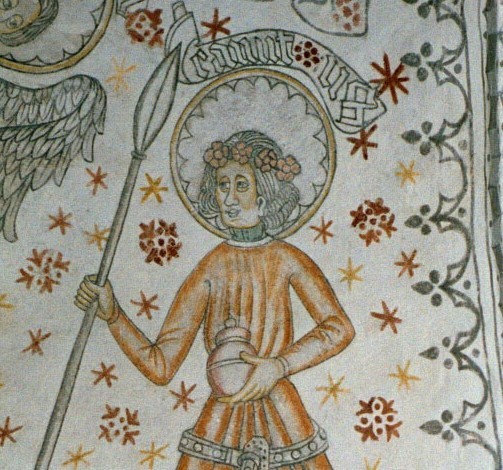
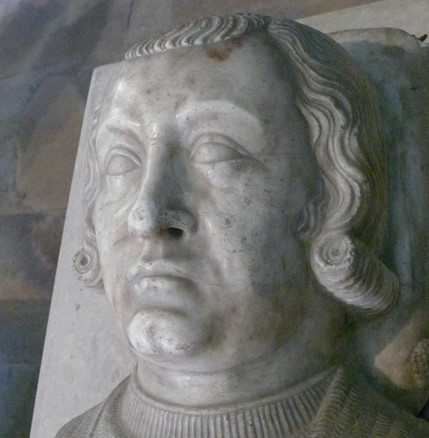
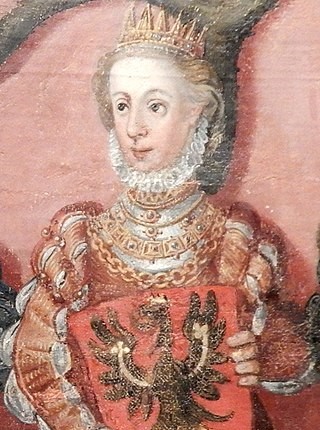
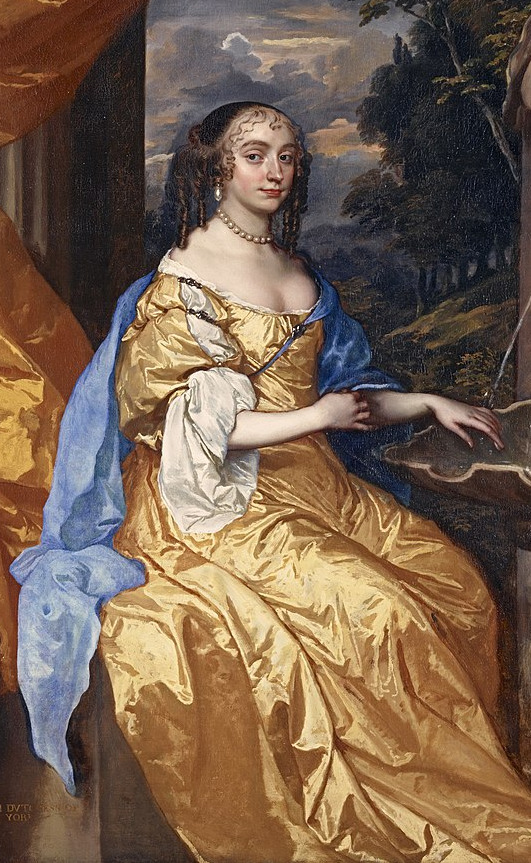
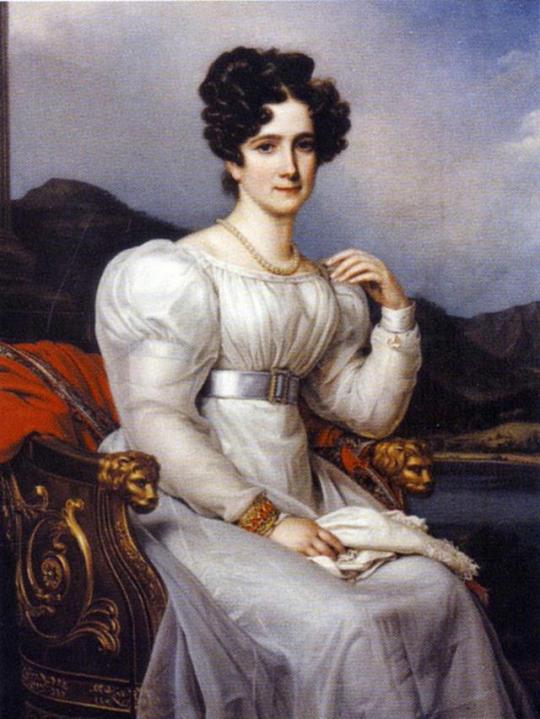
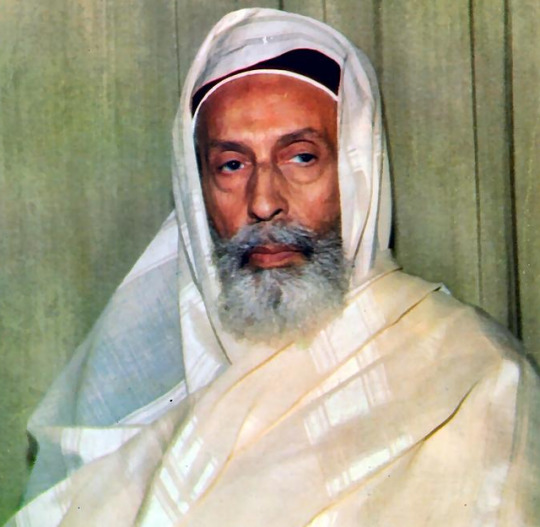

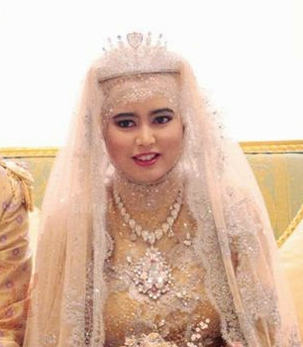
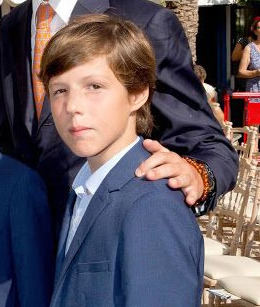

Royal Birthdays for today, March 12th:
Canute Lavard, Danish Prince, 1096
Charles, Count of Valois, 1270
Anna Jagiellon, Duchess of Pomerania, 1476
Anne Hyde, Duchess of York and Albany, 1637
Frederica of Baden, Queen of Sweden, 1781
Idris, King of Libya, 1889
Farahnaz Pahlavi, Princess of Iran, 1963
Hajah Hafizah Sururul Bolkiah, Princess of Brunei, 1980
Gabriel, Prince of Nassau, 2006
Xan Windsor, Lord Culloden, 2007
#anne hyde#charles of valois#frederica of baden#anna jagiellon#king idris#Farahnaz Pahlavi#Hajah Hafizah Sururul Bolkiah#prince gabriel#xan windsor#Canute Lavard#royal birthdays#long live the queue
57 notes
·
View notes
Photo
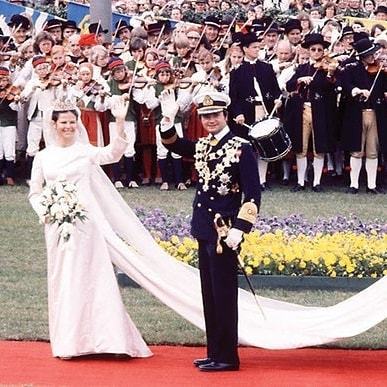
The wedding of King Carl XVI Gustaf of Sweden, and Miss Silvia Sommerlath took place on Friday, 19 June 1976 at Storkyrkan. It was the first marriage of a reigning Swedish monarch since 1797 when Gustav IV Adolf married Princess Frederica of Baden. In 1972, then Crown Prince Carl Gustaf attended the Summer Olympics in Munich, West Germany, where interpreter Silvia Sommerlath was charged with escorting him. In a later interview, the King explained how it just "clicked" when they met.[2] In the subsequent years, Carl Gustaf's mother, Princess Sibylla, died, as did his grandfather, Gustaf VI Adolf, and he, therefore, acceded to the Swedish throne. On 12 March 1976, King Carl XVI Gustaf announced his engagement to Silvia Sommerlath. The King presented his fiancée with a single solitaire ring set with a 2-carat diamond. The ring once belonged to his late mother. The date was set for 19 June. The same date that the future King Oscar I married Josephine of Leuchtenberg in 1823 and their son, the future King Charles XV married Princess Louise of the Netherlands in 1850. The wedding began at 12:00 CET on 19 June 1976. The Church of Sweden ceremony was officiated by Olof Sundby, Archbishop of Uppsala, in Storkyrkan. At approximately 12:45, the marriage was solemnized and Sommerlath officially became Queen consort of Sweden. #RoyalWedding #SwedishRoyalFamily #SwedishRoyals #Bernadotte #KingCarlXVIGustaf #QueenSilvia #kungaparet #Monarchy #EuropeanRoyalties https://www.instagram.com/p/CQVTyCgnM9O/?utm_medium=tumblr
#royalwedding#swedishroyalfamily#swedishroyals#bernadotte#kingcarlxvigustaf#queensilvia#kungaparet#monarchy#europeanroyalties
1 note
·
View note
Photo








Tsarinas Consorts of the Romanov House.
Maria Vladimirovna - Maria was born in 1601 and was the first wife of Tsar Michael I. She was selected for marriage to Michael by his mother, Xenia Shestova, after several years of difficulty of finding a partner for the Tsar. The wedding took place on 19 September 1624. Not long after the wedding, the Tsarina took ill. She died on 17 January 1625, four months after the wedding. There were rumors at the time that she had been poisoned by fractions at court determined to prevent any potential pro-Rurikid influence, or by the enemies of her father’s family.
Eudoxia Lukyanovna - Eudoxia was born in 1608 and was the second wife of Tsar Michael I. She was among those daughters of the nobility summoned to appear in the Bride-show at court, when the tsar was to select his new tsaritsa, after his first spouse had died. He eventually chose Eudoxia because of her beauty, polite behavior and mild disposition. She was described as a modest and virtuous girl, dominated by her proud relatives, who sometimes brought her to tears but still did not complain. The wedding was conducted on 5 February 1626. After the wedding, she was given several lands, and a substantial fortune of her own. Eudoxia and Michael became parents of 10 children, including the future Tsar Alexei I.
Maria Ilyinichna - Maria was born in 1624 and was the first wife of Tsar Alexei I. The tsar was to choose his bride from a bride-show of hundreds of daughters of the nobility, Maria was selected as the tsar's second choice after his first choice to marry Euphemia Fedorovna Vsevolozhskaya was annuled. Maria was reportedly a beauty. The wedding was conducted in 16 January 1648 in Moscow and the union is described as a happy one. The couple had 13 children, including Tsar Feodor III of Russia, Tsar Ivan V of Russia, and the Princess Regent Sophia Alekseyevna.
Natalya Kirillovna - Natalya was born in 1651 and was the second wife of Tsar Alexei I. In March 1669, Tsar Alexis’ first wife, Tsarina Maria, died during the birth of what would have been their fourteenth child. The Tsar supported by the Russian public, although not by the family of Maria, decided to remarry in the hope of producing more potential heirs. The tsar arranged an inspection of women he considered eligible in early 1670, Natalya was added to this inspection following an encounter with the tsar at the home of her adoptive father, Artamon Matveyev. Alexis was impressed by Natalya's beauty, and selected her to be his bride without needing to go ahead with a planned second inspection. The couple married on 1 February 1671. Alexis and Natalya had a happy marriage, spending much of their time together in various palaces and villas around Moscow. The couple became parents of the future Tsar Peter the Great.
Agafiya Semyonovna - Agafiya was born in 1663 and was the first wife of Tsar Feodor III. In 1680, Tsar Feodor, saw her during a religious procession: when she fainted after the sight of a witch in a religious theater play he rushed forward to support her, and fell in love with her. Aware that her uncle did not wish her to marry, a traditional summon was proclaimed to all unmarried noble women to gather for Feodor to choose from, and he chose her. On 18 July 1680, she married Feodor. Agafya has been described as merciful and loyal to her husband and the public's welfare. She could speak and write Polish, French and Latin and was well informed about the Western European life style. She could also play harpsichord. She was described as beautiful as "an angel of heaven", with an easy going character. She was the first to advocate beard-shaving and the adoption of Western clothes at the Russian court. She herself was the first Tsarina to expose her hair and to wear a Western (Polish) dress. Agafya died as a consequence of the childbirth, and six days later, the nine-days-old Tsarevich Ilya also died. She was reportedly deeply mourned by Feodor.
Marfa Matveyevna - Marfa was born in 1664 and was the second wife of Tsar Feodor III. She was the daughter of Matvey Vasilyevich Apraksin and Domna Bogdanovna Lovchikova. She and Feodor were married on 14 February 1682, and he died only a few months later in April.
Praskovya Fyodorovna - Praskovya was born in 1664 and was the only wife of Tsar Ivan V. The marriage of Ivan V was arranged by his sister, the regent Sophia. Ivan V himself reportedly showed no inclination toward marriage and according to the Swedish diplomat Hildebrandt Horn, Praskovia was not willing to marry Ivan, but was forced to consent. The wedding took place on 9 January 1684, with the Patriarch John officiating as the ceremony. Praskovia Saltykova was at the time of her marriage described as a healthy Russian beauty, tall, with a full figure and long thick hair, as a person, she was described as religious, superstitious and not very well educated. Praskovya and Ivan had five daughters including Empress Anna of Russia.
Eudoxia Feodorovna - Eudoxia was born on 1669 and was the first wife of Tsar Peter I (the Great). She was chosen as a bride for the Tsar by his mother Natalya. She was crowned Tsarina in 1689. The Tsar could not stand her conservative relatives and soon abandoned her for a Dutch beauty, Anna Mons. Eudoxia's letters to Peter were full of complaints and exhortations of unrequited love. She was the paternal grandmother of Peter II of Russia.
Catherine Alexeyevna - Catherine was born on 1684 and was the second wife of Tsar Peter I (the Great). She was originally named Marta Helena Skowrońska, In 1705,she converted to Orthodoxy and took the new name of Catherine Alexeyevna. Afterwards she became part of the household of Prince Alexander Menshikov, who was the best friend of Peter the Great of Russia. Anecdotal sources suggest that she was purchased by him. In 1704, she was well established in the Tsar's household as his mistress, and gave birth to a son, Peter. Though no record exists, Catherine and Peter are described as having married secretly in St. Petersburg in 1707. Peter married her again (this time officially) at Saint Isaac's Cathedral in St. Petersburg in 1712; she took the style of her husband and became Tsarina. They had 12 children. Peter died on 1725 without name a successor and Catherine was chosen as Empress Regnant.
Catherine Alekseyevna - Catherine was born in Prussia as Princess Sophie of Anhalt-Zerbst on 1729 and was the only wife of Tsar Peter III. The choice of Sophie as wife of her second cousin, the prospective Tsar Peter, resulted from some amount of diplomatic management in which Count Lestocq, Peter's aunt (and the ruling Russian Empress) Elizabeth and Frederick II of Prussia took part. Lestocq and Frederick wanted to strengthen the friendship between Prussia and Russia to weaken Austria's influence and ruin the Russian chancellor Bestuzhev, on whom Empress Elizabeth relied, and who acted as a known partisan of Russo-Austrian co-operation. The diplomatic intrigue failed, largely due to the intervention of Sophie's mother, Johanna Elisabeth of Holstein-Gottorp. Historical accounts portray Johanna as a cold, abusive woman who loved gossip and court intrigues. Despite Johanna's interference, Empress Elizabeth took a strong liking to Catherine, who, on arrival in Russia in 1744 spared no effort to ingratiate herself not only with Empress Elizabeth, but with her husband and with the Russian people as well. The long-planned dynastic marriage finally occurred on 21 August 1745 in Saint Petersburg. Sophie had turned 16; The newlyweds settled in the palace of Oranienbaum, which remained the residence of the "young court" for many years to come. In 1762 Peter died and Catherine took the throne as Catherine II. Peter and Catherine were parents of Tsar Paul I.
Maria Feodorovna - Maria was born in Prussia as Duchess Sophie Dorothea on 1759 and was the second wife of Tsar Paul I. In 1776, when Grand Duke Paul (the future Paul I of Russia), became a widower, Sophie Dorothea was chosen by Frederick II of Prussia, her maternal great uncle, and by Empress Catherine II of Russia, as the ideal candidate to be Paul’s second wife. They met in a state dinner in Berlin and their engagement was quickly arranged.Sophie Dorothea arrived in St Petersburg that September, converted to the Russian Orthodox Church, and took the name Maria Feodorovna. She married Paul on 26 September 1776. In spite of her husband's difficult character, Maria Feodorovna made a success of her marriage. Paul and Maria lived at Gatchina. They were devoted to each other and had ten children including: Tsar Alexander I, Tsar Nicholas I of Russia, Grand Duchess Maria of Saxe-Weimar-Eisenach, Queen Catherine of Wurttemberg and Queen Anna of the Netherlands.
Elizabeth Alexeievna - Elizabeth was born on 1779 in Germany as Princess Louise Maria Auguste of Baden and was the only wife of Tsar Alexander I. Catherine the Great was looking for a bride for her eldest grandson, the future Alexander I, and set her eyes on the Princesses of Baden, so Catherine invited Princess Louise and her younger sister Frederica, who later became Queen of Sweden, to Russia. In the autumn of 1792, the two sisters arrived in St. Petersburg. The Empress was delighted by Louise, finding her a model of beauty, charm, and honesty. Louise herself was attracted to Alexander, who was handsome. At first, Alexander was shy with his future bride — very young and inexperienced, however, the young couple soon grew fond of each other. The Princess learned Russian and converted to the Orthodox Church. The wedding took place on 28 September 1793. "It was a marriage between Psyche and Cupid", Catherine wrote to the Prince of Ligne. Elizabeth was only fourteen, her husband a year older.
Alexandra Feodorovna - Alexandra was born in Berlim as Princess Friederike Luise Charlotte Wilhelmine of Prussia on 1798 and was the only wife of Tsar Nicholas I. In 1814, Nicholas Pavlovich, future Tsar of Russia, and his brother Michael Pavlovich, visited Berlin. Arrangements were made for Nicholas to marry Charlotte, then fifteen years old, to strengthen the alliance between Russia and Prussia. On a second visit the following year, Nicholas fell in love with the then-seventeen-year-old Princess Charlotte. The feeling was mutual, "I like him and am sure of being happy with him." She wrote to her brother. On June 1817 Charlotte came to Russia with her brother William. After arriving in St. Petersburg she converted to Russian Orthodoxy, and took the Russian name "Alexandra Feodorovna". On her nineteenth birthday, on July 1817, she and Nicholas were married in the Grand Church of the Winter Palace. The couple had 7 children including Tsar Alexander II.
Maria Alexandrovna - Maria was born as Princess Maximiliane Wilhelmine Auguste Sophie Marie of Hesse and by Rhine on 1824 and was the first wife of Tsar Alexander II. In 1839, the Tsarevich Alexander, traveled to western Europe to complete his education and to search for a wife. He stopped for one day in Darmstadt during the evening, invited to the Opera house by the Grand Duke of Hesse, Alexander was introduced to Princess Marie. Alexander was smitten by her. In June of 1939, he returned to Darmstadt to seal his engagement with Princess Marie. The Princess was received into the Russian Orthodox Church on December 1840 and became Grand Duchess Maria Alexandrovna. The wedding took place on 28 April, 1841. The couple had 8 children including Tsar Alexander III.
Maria Feodorovna - Maria was born on 1847 at Denmark as Princess Marie Sophie Frederikke Dagmar and was the only wife of Tsar Alexander III. In 1864, Tsarevich Nicholas went to Denmark where he was betrothed to Dagmar. On April 1865 he died from meningitis. His last wish was that Dagmar would marry his younger brother, the future Alexander III. Dagmar was distraught after her young fiancé's death. The disaster had brought her very close to "Nicholas’" parents, and she received a letter from Alexander II in which the Emperor attempted to console her. In June 1866, while on a visit to Copenhagen, the Tsarevich Alexander asked Dagmar for her hand. They had been in her room looking over photographs together. She converted to Orthodoxy and became Grand Duchess Maria Feodorovna. The wedding took place on November 1866 in the Imperial Chapel of the Winter Palace in Saint Petersburg. The couple had 6 children including Tsar Nicholas II.
Alexandra Feodorovna - Alexandra was born on 1872 in Darmstadt as Princess Alix Viktoria Helene Luise Beatrix of Hesse and by Rhine and was the only wife of Tsar Nicholas II. Nicholas and Alix had first met in 1884 at the wedding of Nicholas's Uncle Sergei and Alix's sister Elisabeth in St. Petersburg. When Alix returned to Russia on a several week visit in 1889, the two young people fell in love. Initially Nicholas's father, Tsar Alexander III, refused the prospect of their marriage. Alexander and his wife were both vehemently anti-German, and did not want the match with Princess Alix. While in good health, Alexander III ignored his son's demands, but began to relent when his health began to fail. In 1894 Nicholas proposed to Alix. She initially rejected him on the grounds of her refusal to convert to Orthodoxy. However, after pressure from the Kaiser, who had told her that it was her duty to marry Nicholas she accepted his second proposal. Alexandra and Nicholas were wed in the Grand Church of the Winter Palace of St Petersburg on 26 November 1894. The marriage that began that night remained exceptionally close until the pair was assassinated in 1918. The marriage was outwardly serene and proper, but based on intensely passionate physical love.
#Tsarina maria vladimirovna#tsarina eudoxia#tsarina maria ilyinichna#tsarina natalya#tsarina agafiya#tsarina marfa#Catherine the Great#catherine i#tsarina maria alexandrovna#tsarina maria feodorovna#elizabeth alexeievna#maria feodorovna#tsarina alexandra#empress alexandra
143 notes
·
View notes
Text
Charles XIII of Sweden by Carl Frederik von Breda (Photo credit: Wiki2.org)
Prince Charles (XIII) in 1758 by Ulrica Pasch (Photo credit: Wiki2.org)
This post does not describe la Terreur, the Reign of Terror, which should be its subject matter. I have chosen instead to write a little story about Sweden’s Royal House of Bernadotte. The Swedish House of Bernadotte is associated with both the French Revolution and the Napoleonic wars. I am postponing a very short discussion of the Reign of Terror in order to situate the French Revolution in its European context. European monarchs did oppose the French uprising of 1789, beginning with King Gustav III of Sweden, Charles XIII’s older brother.
Following the uprising against the French monarchy in 1789, Gustav pursued an alliance of princes aimed at crushing the insurrection and re-instating his French counterpart, King Louis XVI, offering Swedish military assistance as well as his leadership.
(See King Gustav III of Sweden, Wiki2.org.)
King Gustave III of Sweden, King Charles XIII and Prince Frederick Adolf were nephews of Frederick the Great of Prussia and the three sons of “Adolf Frederick, King of Sweden Queen Louise Ulrika (a sister of King Frederick the Great of Prussia), and a first cousin of Empress Catherine the Great of Russia by reason of their common descent from Christian August of Holstein-Gottorp, Prince of Eutin, and his wife Albertina Frederica of Baden-Durlach.” (See King Gustav III of Sweden, Wiki2.org.)
King Gustav III of Sweden and his Brothers; Gustav III (left) and his two brothers, Prince Frederick Adolf and Prince Charles, later Charles XIII of Sweden. Painting by Alexander Roslin. (Charles XIII, Wiki2.org.)
Louis XVI and Marie-Antoinette, were also related to the House of Habsbpurg-Lorraine. Marie-Antoine was the sister of Leopold II, Holy Roman Emperor (See Declaration of Piltnizt, wiki2.org) whose relatives were other European monarchs. (See House of Habsburg-Lorraine, wiki2.org). As for Louis XVI, his mother was Maria Leszczyńska.
Marie-Antoinette and Louis XVI did appeal to their families during the French Revolution. It was normal. Swedish Count Axel von Fersen the Younger, Marie-Antoinette’s rumoured lover, did help the Royal family organize the flight to Varennes. Moreover, King Louis XVI was very tall (185cm/6ft 1in) for a man of his era and a Frenchman.
In short, the French Revolution sent shockwaves throughout Europe. Some royals consolidated absolutism, others, a constitutional monarchy. Gustav III of Sweden was beloved despot. He was shot in the lower back and died 13 days later. Prince Carl and Gustaf Adolf Reuterholm were appointed regents until Gustav IV of Sweden reached adulthood, in 1796.
Unpopular and autocratic Gustav IV was overthrown and exiled in a coup d’état, Sweden having lost Finland to Russia. (See Finnish War, wiki2.org). The authority of Sweden’s Royals was vastly diminished by the Constitution of 1809 or Instrument of Government (1809). The powers of government were divided between the monarch and the Riksdag of the Estates.
Gustav III had two brothers: Carl (Prince Charles) and Prince Frederick Adolf of Sweden (18 July 1750 – 12 December 1803 in Montpellier, France). Prince Frederick Adolf never reigned.
King Charles XIII was childless and sickly. An heir to the throne of Sweden and Norway had to be selected.
Jean-Baptiste-Jules Bernadotte
Jean-Baptiste-Jules Bernadotte, would be the new and elected King of Sweden (as Charles XIV) from 1809 and King of Norway (as Charles III John) from 1814 until his death, in 1844.
“His candidacy was advocated by Baron Carl Otto Mörner, a Swedish courtier and obscure member of the Riksdag [Diet] of the Estates.” (See Charles XIV John of Sweden, Wiki2.org.)
Carl Otto Mörner so wished for Bernadotte to be elected Crown Prince that he discussed the matter with Jean-Baptiste-Jules Bernadotte himself, the dutiful Marshall of France. Bernadotte answered that if he were elected Crown Prince, he would accept his new role. As one may expect, Mörner was arrested when he returned to Sweden. He had gone to far. However, Jean-Baptiste-Jules Bernadotte proved the better candidate. Weighing in his favour, were his superior military skills.
Napoleon Bonaparte had named Jean-Baptiste-Jules Bernadotte (26 January 1763 – 8 March 1844) a marshall of France (un maréchal de France) and, on 5 June 1806, the Prince of Pontecorvo, a title he surrendered in 1810. King Charles XIII named his adopted heir Generalissimus of the Swedish Armed Forces.
There is a Baron in the Bernadotte family, but Jean-Baptiste is a commoner. He was born in Pau, Béarn, France, to Jean-Henri Bernadotte, a prosecutor. His mother was Jeanne de Saint-Jean. Jean-Baptiste planned to study law.
Charles XIV John, detail of an oil painting by Fredric Westin, 1824; in Gripsholm Castle, Sweden.
Courtesy of the Svenska Portrattarkivet, Stockholm (Britannica)
Desideria Clary, queen of Sweden by Fredric Westin (Désirée Clary, wiki2.org)
In 1798, Jean-Baptiste married Désirée Clary, whose sister was married to Napoleon’s brother Joseph Bonaparte. Désirée would be Queen Consort of Sweden as Desideria.
In 1813, after Napoleon’s unrealistic and disastrous Russian campaign, Karl XIV Johan entered an anti-Napoleon alliance which probably strengthen the Sixth coalition. When Norway was awarded to Sweden by the Treaty of Kiel, King Carl XIV Johan proposed a “personal union” between the two countries. Both would have the same king, but Norway was an independent kingdom. Bernadotte reigned as Charles XIV John (Carl Johan) of Sweden and Charles III John of Norway from 5 February 1818 until his death on 8 March 1844.
The Bernadottes are de jure a branch of the Holstein-Gottorps due to the last Holstein-Gottorp king’s adoption of the first Bernadotte king Charles XIV John in 1810.
(See House of Bernadotte, Wiki2.org)
Prince Carl Philip & Alexander (Pinterest)
Princess Sofia (Pinterest)
The house of Bernadotte is doing well. Prince Carl Philip, Duke of Värmland, is married to Princess Sofia, Duchess of Värmland, a commoner. The couple have two children. The Crown Princess is Victoria, Duchess of Västergötland who is married to Prince Daniel, Duke of Västergötland. They have two children. Princess Madeleine, Duchess of Hälsingland and Gästrikland who is married to British-American financier Christopher O’Neil. They have three children. The King of Sweden is Carl XVI Gustaf who is married to Queen Sylvia.
Johan Helmich Roman Violin Concerto in D minor BeRi 49
youtube
Prince Carl Philip
© Micheline Walker
27 September 2018
WordPress
.
The House of Bernadotte This post does not describe la Terreur, the Reign of Terror, which should be its subject matter.
#Adoption#Autocracy vs Democracy#Charles XIII#Charles XIV John#Election#Jean-Baptiste Bernadotte#Marshall of France#Napoléon Bonaparte#Prince Carl Philip Duke of Varmland#Princess Sofia Duchess of Varmland#the House of Bernadotte#the House of Holstein-Gottors
1 note
·
View note
Text
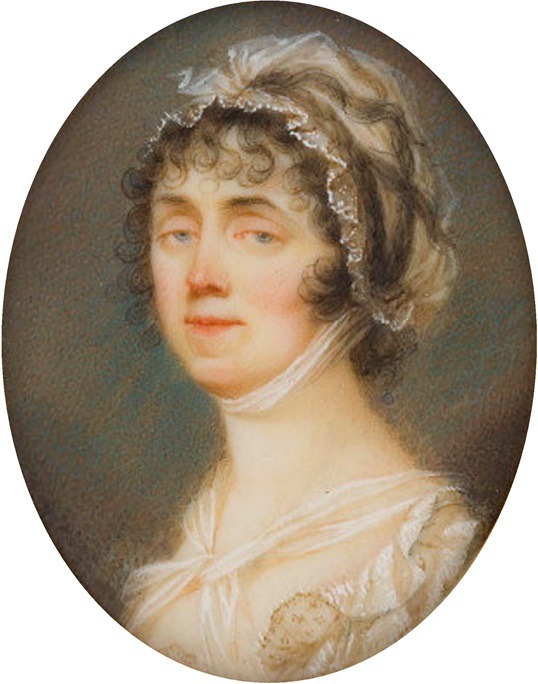
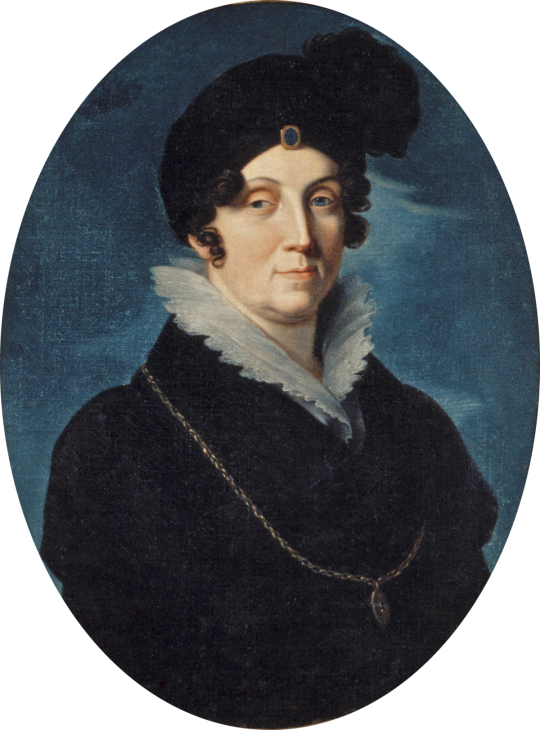
Mother-in-law of Europe.
Princess Amalie of Hesse-Darmstadt, Hereditary Princess of Baden (1754-1832).
She was the daughter of Ludwig IX, Landgrave of Hesse-Darmstadt and Henriette Karoline of Palatine-Zweibrücken.
Amalie was born in Prenzlau and was brought to St Petersburg with her mother in 1772 to visit the Russian court as one of the candidates for a marriage with the Tsarevich Paul Petrovich ; Paul, however, decided upon her sister Wilhelmine.
Amalie married her first cousin, Charles Louis, Hereditary Prince of Baden on 15 July 1775.
She is known as the "mother-in-law of Europe" because she cleverly married her daughters to influential princely courts. From her marriage Amalie had six daughters and two sons.
Among her daughters were Karoline, Queen of Bavaria, Empress Elizabeth Alexeievna, Queen consort Frederica of Sweden and Grand Duchess Wilhelmine of Hesse and by Rhine.
She is an ancestor to the House of Grimaldi (Monaco) through her only son Karl, Grand Duke of Baden, her daughter Karoline was Empress Sissi's and Emperor Francis Joseph's grandmother.
She is also an ancestor of the Swedish and Danish Royal Family through her daughter Frederica and through her youngest daughter, Wilhelmine, she is an ancestor of the British Royal Family, Romanian Royal Family, Yugoslavian Royal Family, Spanish Royal Family, House of Romanov and Prussian Royal Family.
#princess amalie of hesse-darmstadt#hereditary princess amalie of baden#hesse#hesse-darmstadt#baden#german royal#german royalty#history
40 notes
·
View notes